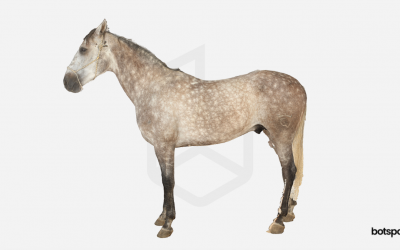SCULPTURES AND 3D SCANNING
The integration of 3D scanning technology into the world of art holds huge potential in both the process of creating art and the crucial task of preserving our artistic heritage. This article focuses specifically in the realm of sculpture, and how 3D scanning is proving to be an indispensable tool for sculptors and conservators alike, blending cutting-edge technology with traditional craftsmanship and restoration methods.
Sculpting
Artists have found multiple ways that 3D scanning and digital models can help them in their processes:
• Perfect Reference Pieces
Scanning and modeling the subject that the sculptor wants to capture in their piece allows them to have constant access to the reference piece in unparalleled detail with precise color and texture information. This eliminates the need for the subject to stand and model for the artist, saving time and potential costs for everyone involved. The sculptor also then has access to all the precise measurements they might need for their planned piece, without having to physically measure the subject, or make a rough estimate.
• Expands Creative Possibilities
Once a subject or a maquette (a small preliminary model of the sculpture) has been scanned and a 3D model created, the artist has complete control and flexibility to edit and manipulate the piece using specialized software. This allows for quick and easy experimentation and exploration, speeding up the creative process for the artist to successfully recreate what they envision for the piece, without having to commit large amounts of time, energy and material. This makes it much easier to try different postures or make adjustments. Having a digital model or a draft of the art piece also opens up the opportunity for easy collaboration between artists. Two artists in different parts of the world can work on the same piece digitally, or give their input on it, before it is created.
• Cost-Effective
As mentioned in the previous point, 3D scanning lets artists quickly run through rough drafts digitally before physically creating the piece, saving time and material. Another useful feature is the ability to accurately calculate the surface area of the artwork, enabling the sculptor to predict exactly how much material will be needed and
Having a digital model of the piece lets commissioned artists easily show their client exactly what they intend to make, reducing the risk of the final piece being rejected after it has already been made.
Art Preservation and Exhibition
Museums, art galleries and cultural institutions are already utilizing 3D scanning technology to record and digitize priceless art pieces, opening up a whole world of possibilities:
• Protection and Preservation
Scanning and digitizing sculptures ensures that our art and culture, both past and present, will be available for future generations. Whatever happens to the original sculpture, the 3D model would be available to help restore or even recreate the piece in ultra precise detail, providing an extra level of insurance.
• Making Art Accessible
For people who are blind or visually impaired, art can often be inaccessible to them, as most museums and galleries don’t allow visitors to touch the artwork. Scanning a sculpture and creating a highly accurate 3D model enables you to print it, or recreate it in a small, handheld version. People with a visual impairment can then engage with the art piece by feeling it and understanding what it is, giving them the chance to experience something that was previously out of their reach.
• Finding New and Broader Audiences/Markets
While it is very easy to view paintings, drawings, watercolors, prints, photographs or other two-dimensional works of art online, the situation is completely different with sculptures and other three-dimensional objects. This is changing rapidly with 3D applications and we are excited to see what impact this trend has on both the art market and the way exhibitions will function in the future – be it completely in VR (virtual reality), AR (augmented reality) or in mixed forms (mixed reality / MXR).
You can already try it out yourself here:
3D scanning their collection allows museums and galleries to create an immersive virtual presentation for people to experience. A person doesn’t have to physically be in the building, or even in the same country, to see, study and interact with the art. Technologies like the Apple Vision Pro are still at the very beginning and will certainly inspire completely new forms of art just as the perception of art as a truly immersive act.
Art galleries can also provide incredible product presentations for potential buyers, who would be able to see what a piece of art looks like in their own space through augmented reality, before deciding to purchase.
View a piece of art in your own living room with your smartphone, here, clicking the button on the bottom righthand corner labelled “AR”:
Conclusion
3D scanning and models can never replace the traditional and beautiful craftsmanship that goes into creating art, but integrating and blending the technology into the process can help yield remarkable results. From speeding up the creative process and making it more cost-effective, to making art more accessible to populations previously excluded, there is no doubt that 3D scanning brings huge advantages to the world of art and culture. This article is definitely not an exhaustive list, and indeed there are probably uses that haven’t even been thought of yet. Here at botspot, we look forward to seeing this potential being realized. If you feel 3D scanning can help you in your artistic endeavors or business, or you would just like some advice, don’t hesitate to contact us here and talk to one of our experts.



